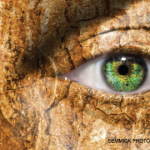“Two weeks ago, the fevers started up. Every night, just over l00, then the muscle aching,” Mom replied.
“How about the rash last month?” Amanda’s dad patted his daughter’s ankle and took a seat on the other side of the stretcher. “Same one she has now, but it faded after four or five days. It came on a day after she spent the afternoon at Fun Town with her friends. It seemed different than a sunburn—you know, not red all over—and that was the first time her muscles ached. I thought she had some kind of bug. Did we take her temp that night?” he looked at his wife, who shook her head.
Physical Exam
I methodically went through my exam. Inside Amanda’s mouth I identified two large ulcers on the edge of her tongue and another on the inner left cheek. I noticed that above the right ear was a bare patch of pink scalp. Amanda reached up and grabbed my hand. “I hate my hair. Don’t touch it.”
I scanned her face from the side, saying nothing. The slightly raised rash extended across the nose and onto the cheeks, sparing the outer edge of the nostrils. With her mother’s help, I pulled up Amanda’s pajamas to assess the lower extremities. From the mid-calves to the ankles, the skin was peppered with angry red spots. It was the wrong rash for parvovirus or coxcackie virus and the wrong rash for measles or mononucleosis. This was much more worrisome, a vasculitic rash, an immune-mediated inflammation of the venules and capillaries nourishing the skin.
The left knee was warm, perhaps minimally swollen, and Amanda whimpered when I asked her to bend it slightly. “I’m not going to bend your knee; I just need feel if there’s fluid inside it. Okay?”
“Just don’t lay me down,” she answered, grabbing the side rails.
A telltale bulge sign was present in the knee, evidence of a small effusion.
“Okay, time to listen to your heart.” I tapped the diaphragm side of the stethoscope to ensure it was clicked into the correct position, and allowed it to drop down the front of her chest beneath her P.J.s. The background din of the emergency department faded as I placed the ear buds firmly in place and raised a finger to Amanda’s father, who was talking on his cell phone.
I filtered out the steady shhhhhh of oxygen flowing into Amanda’s nose and listened. There. A faint leathery sound kept beat with her racing heart, filling in what is normally a silent pause between beats: BP … crcrcrc … BP … crcrcr … BP … crcrcr. I closed my eyes and concentrated. There it was again, a pericardial rub, a distinctive sound associated with inflammation of the sack surrounding the heart.


